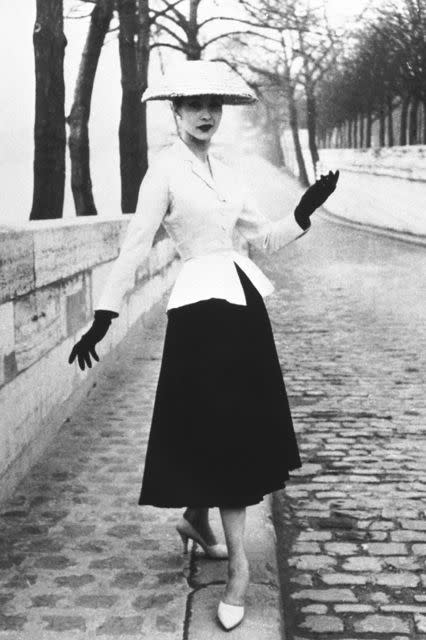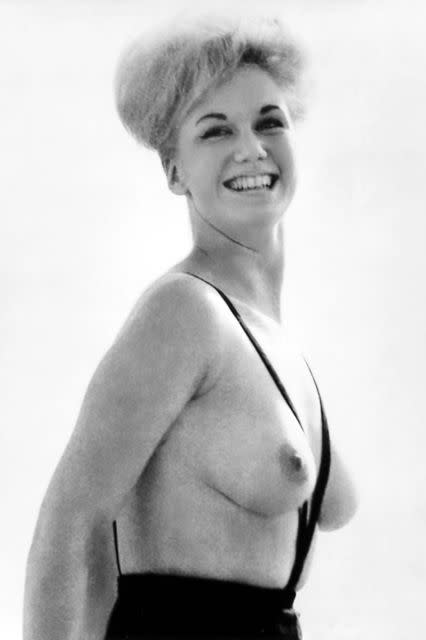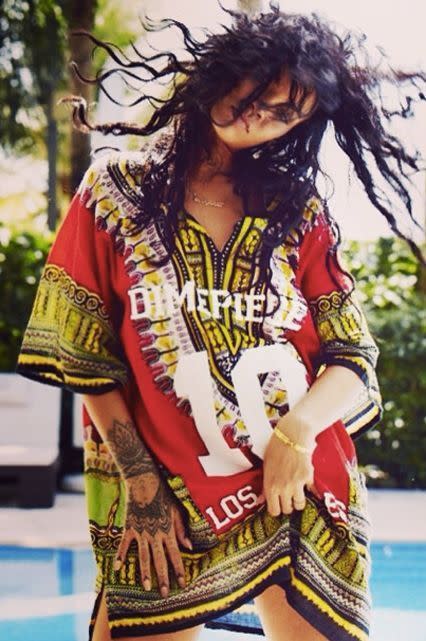From Hoodies To Bras: A History of Clothes as Political Weapons

Photo: Getty Images
The saying goes that the personal is political — and the clothes we put on our bodies are a big part of the personal. Some may not think of clothing as a logical medium for political messaging, but people have used it as a way to call attention to various causes for centuries. After all, what we wear is imbued with layers of meaning — and when your voice has been silenced, sometimes you need non-verbal ways to get your point across.
Related: All The Boob Questions You Were Afraid To Ask, ANSWERED
But while fashion has been rife with political symbolism for as long as people have worn clothes, social media and mass production have made it possible for larger swaths of the population to follow politically influenced fashion trends. You can see this on the Facebook page My Stealthy Freedom, where Iranian women post photos of themselves sans hijab as an act of liberation. In the late aughts, you saw it become bastardized at Urban Outfitters and Topshop, two brands that churned out keffiyehs — the scarves that were adopted as symbols of Palestinian nationalism — for all your hipster accessorizing needs.
Ahead, we look at several 20th- and 21st-century instances in which clothes have been used as political weapons, from bras in solidarity with female protesters to hoodies for #BlackLivesMatter.
Related: 4 Crazy Makeup Hacks You Need To Learn Now
The New Look
Nipped-in waists, full skirts, and sequined ball gowns may not seem like political weapons. But author and anthropologist Wednesday Martin, PhD, says Christian Dior’s New Look — what fashion editors called the 1947 silhouette of small waists, large skirts, and large busts that brought post-World War II Paris back to the forefront of the fashion world — played a role in setting women back.
“We can see fashion…reinforcing the social trend of that time, which was to forcefully ‘re-feminize’ women and assert that their place and duty was to go back into the home as their husbands returned from the war and wanted back the factory jobs women had taken,” Dr. Martin, who taught fashion history at Parsons and is the author of Primates of Park Avenue,told Refinery29 in an email. “No more Rosie the Riveters in trousers, being competent and having both feet sturdily on the ground, creating war weapons in the factories. Now, women were to be displayed, held in, held up on their tippy toes [i.e., in stilettos].”

Photo: Getty Images
The Monokini
In 1964, the world got its first topless swimsuit — the monokini, designed by Rudi Gernreich, which featured high-waist bottoms held up by a strap around the neck. Many called it a symbol of the sexual revolution, sending a message that women shouldn’t be ashamed of showing their breasts. Predictably, it was strongly panned by the Soviet Union, the Vatican, and the Republican Party.
“Gernreich’s monokini…embraced a sense of eroticism, allowing women to be playful and self-aware, displaying their bodies on their own terms,” explains Kim Jenkins, a visiting assistant fashion professor at Pratt. It was also arguably an early predecessor of Instagram’s #freethenipple movement — and the changing attitudes (and laws) around toplessness in the latter half of the century.
Related: The Secret To The Perfect Plank
The Dashiki
With roots in West Africa, the dashiki is a traditional loose-fitting tunic that’s often made with embroidered colorful fabrics. It’s widely worn by both men and women, and has formal and informal versions. In the U.S., it gained popularity in the late 1960s as a symbol of the Black Power, Black Is Beautiful, and Afrocentric movements, when African-American people embraced it as a connection to their stolen ancestry. Jenkins, who is also co-editor of forthcoming book Fashion & Race, says that along with the natural hair movement, clothing and headwear inspired by various African nations was worn as “an act of rebellion against the status quo and acknowledgment of [African-American] cultural heritage.“

Photo: @badgalriri/Instagram
Members of the Black Panthers would often combine dashikis with leather jackets, combat boots, and berets. After a while — especially as non-Black counter-culturalists picked it up — it lost its political identity and became a whitewashed ‘70s trend. (And then, in 2015, a fashion mag called it “the newest It-item,” even though it had been around for centuries.)
The Keffiyeh
While the keffiyeh has become a widely recognized symbol of Palestinian liberation, it was originally a traditional Arab head covering, often worn by farmers, and devoid of political meaning. It became a symbol of Palestinian nationalism during the Arab revolt of the 1930s. Yasser Arafat brought it to the forefront of the political conversation in the 1960s, as the Palestinian resistance movement grew in strength. Since then, pro-Palestinian activists have widely adopted it in solidarity.
Related: This 30-Day Upper-Body Challenge Will Transform Your Arms & Shoulders
But many others have also worn it because it seemed cool, from ‘80s punks to Tokyo school kids. “They were selling keffiyehs in Topshop at one point, and some people were really delighted — and others felt that’s not an authentic use of the keffiyeh, and people would be wearing it not knowing that it has political significance in relation to the Palestinian struggle,” explains Reina Lewis, professor of cultural studies at the London College of Fashion, University of the Arts London, and author of Muslim Fashion.

Photo: Getty Images
The De-Jab
In Iran, going out without a hijab can earn a woman 70 lashes and 60 days in prison. But in 2014, London-based Iranian journalist Masih Alinejad started a Facebook movementusing the hashtag #stealthfreedom, which women used to post pictures of themselves in veil-less moments — flying the veil above their heads, throwing it off, and generally celebrating life without a head covering. The page got over 30,000 Likes in its first five days, and with that attention came widespread support as well as threats to the women participating.
Related: The True Story Of Eyebrow Transplants
Lewis points out that many Muslim women who live in the West view the veil differently from those in the Middle East who protest against it. “Head-covering among Muslim women in the U.S. and the West is often expressed as a choice,” she says. “Many women I’ve interviewed for my book [Muslim Fashion] say it is just as wrong to force someone to uncover as it is to force someone to cover. There’s a really big difference between living in Iran, where there’s a state mandate on how you dress, and living in America.”
